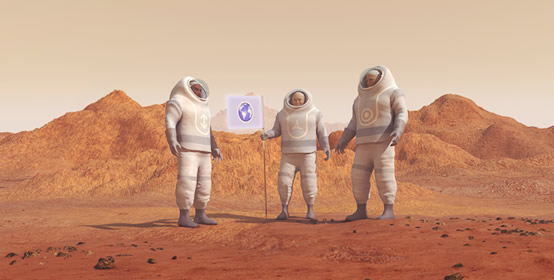
Space enthusiasts are delighting over President Trump’s recent executive order that will reinstate a centralized National Space Council. Buzz Aldrin has been developing plans for a Mars mission since 1985, but without much political support, NASA has failed to raise enough funds to turn the dream into a reality. The main stumbling blocks preventing man from landing on Mars are NASA’s limited funding and technical difficulties. A lack of funding has left NASA looking for public-private partnerships to help develop space technologies, but progress has been slow as companies push to develop technologies that NASA had already perfected in its past.
William Gerstenmaier, NASA’s chief of human spaceflight, recently disclosed the sad reality that the agency will not be able to achieve its dream of sending man to Mars on their current budget. Surprisingly, NASA has only been granted around 0.4 percent of the government’s budget for fiscal year 2018. Despite the agency’s immeasurable contributions to society, the federal government spent more money on the 2008 bank bailout than it has granted NASA throughout the agency’s entire history.
Facing a decreasing budget allowance, NASA was pushed into creating public-private partnerships for travel to the International Space Station and for planning future programs. Currently, travel to the ISS is dependent on Russian cosmonaut’s shuttles cooperation in transporting our astronauts. The agency is funding partnerships with companies like SpaceX and Boeing in hopes of developing a form of private astronaut taxis. Despite such transportation issues, NASA’s current plight to get man to Mars is set to initiate in the 2030s. The mission’s projected completion date would be greatly reduced with more private or taxpayer funding argues Tim Hughes, the Senior Vice President of SpaceX.
One company competing for the coveted position of carrying NASA’s crew in its mission to Mars is SpaceX. Elon Musk has shared in the spotlight for incredible advances like the company’s Falcon 9 rocket. The shuttle is now capable of carrying around 50,000 pounds into low earth orbit. The rocket did suffer from a launch failure back in June, but SpaceX maintains its hopeful goal of launching to Mars by 2020. Musk recently delivered his detailed vision of colonies in Mars with millions of inhabitants by 2060.
Boeing has historically been one of NASA’s top contractors, but budget cuts have caused NASA’s contracts to become much more competitive than in the past. Back in 2014, Boeing was given $4.2 billion to pursue crewed launched services for NASA. SpaceX was awarded $2.6 billion. The company is developing the Starliner spacecraft and spacesuit to accommodate low earth orbit travel. Boeing’s plan for its mission to Mars involves a “Deep Space Gateway”, a space station beyond the Moon’s orbit. This area would serve as a launch point for deeper space travels and is set to assembled in the early 2020s.
When considering the vast amount of technological advances needed to send humans up past the moon, the achievements of the Apollo flights in the 1960s seem that much more incredible. According to experts at NASA, currently available rockets and shuttles are not capable of exceeding low-Earth orbit. Humans are not yet able to survive the extreme radiation found in the Van Allen radiation belts surrounding the Earth.
The area is described by NASA as a “nearly impenetrable barrier,” of electrons that move in giant loops. Jeff Hanley, NASA’s Constellation program manager, explains “the amount of rocket energy it takes to accelerate those kinds of payloads away from Earth doesn’t exist anymore… It exited in the Apollo era with the Saturn V. Since that time this nation has retired that capability.” What this means is that the long journey of getting man to Mars will have to begin by reengineering the technology needed to get man back to the moon. People today would be utterly shocked to learn that the last time we went to the moon astronauts repaired their lunar rover with duct tape. The modern-day smartphone has a more powerful computer than the Apollo astronauts utilized. Rebuilding and upgrading 1960s technologies in the form of NASA’s Orion and Ares I has already cost NASA $35 billion.
For now, NASA and Congress have recognized a viable timetable for men on Mars by the 2030s. The biggest hurdle for space enthusiasts is maintaining enough political support and private funding to continue researching and developing the necessary technologies over the next several decades. As Buzz Aldrin would say, “Get your ass to Mars!”